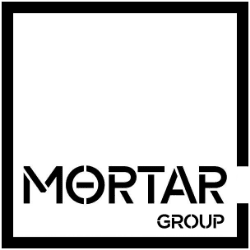
Amidst this sea of investing paperwork, one document stands out for its unique role in certain investment scenarios — the Private Placement Memorandum, or PPM. While not every investor will come across this particular document, those venturing into private investments may find it essential.
Generally, only individuals investing in risky securities such as private placements must review a PPM before making an investment decision. However, whether you’re looking for a Private Placement Memorandum or not, it’s essential to understand what a PPM is and why you may need one.
Definition of Private Placement Memorandum (PPM)
A private placement memorandum is a legal document that serves as an all-inclusive guide, detailing everything from the company’s overview to the investment offering, the risks involved, and the fine print (legal terms and conditions). It ensures investors are aware and informed.
But it’s important to note that a PPM is not a sales document. Rather, it’s a disclosure document designed to protect the issuing company and the potential investors. Moreover, obtaining a PPM falls on the company seeking investors.
Once completed, the company must ensure it reaches the intended investors. This typically involves distributing the document to prospective investors interested in the investment opportunity. After receiving the PPM, potential investors review the document, analyze the disclosed information, and might seek additional clarification or advice from legal or financial professionals.
Types of PPMs
Here’s a quick breakdown of the different types of documents you may come across:
- Mortgage broker business notes: Issued by mortgage broker businesses to solicit investments from lenders.
- Mutual fund shares held by a trust: A trust acts as the investor and acquires shares in a mutual fund on behalf of its beneficiaries.
- Corporation common stock sales: Issued to raise capital by selling corporate common stocks.
- LLC promissory notes: Notes secured by investment funds.
- Count financing authority bond sales: Issued to raise funds by selling bonds.
Each type of PPM presents its unique path to financial growth and adventure.
Elements of a PPM
No matter the type of PPM, they generally contain the same set of elements. Here’s what you can expect:
Introduction
A PPM introduction should include a summary of the company, its purpose, and the type of securities offered. It should also provide details about the offering, such as the amount being raised and how it will be used. Additionally, it should explain any restrictions on who can invest in the offering and what rights come with investing in it.
For example, if a company is raising $10 million dollars through a PPM, they may include information such as:
- The company’s background and purpose;
- The type of security being offered (e.g., common stock or preferred shares);
- The amount being raised ($10 million);
- How the funds will be used (e.g., to expand operations or launch new products);
- Any restrictions on who can invest (e.g., accredited investors only);
- What rights come with investing (e.g., voting rights or dividends).
Summary of Offering Terms
The summary typically includes information such as the type and amount of securities offered, the price per share or unit, any restrictions on transferability or voting rights, any special rights associated with certain investors or classes of investors, and any other relevant information about the offering. It may also include details about how the company will use proceeds from the offering.
Risk Factors
Risk factors are the potential losses or gains associated with an investment, which should always be addressed. These typically include:
- Market risk;
- Asset risk;
- Financial risk;
- Inflation risk;
- Liquidity risk.
For example, a PPM for investing in ABC Corporation common stock may include the following risk factor analysis:
- If the overall market declines, ABC Corporation’s stock value may also decline.
- If tenants vacate their leased premises or the demand for ABC Corporation’s products decreases, its profits and stock value may suffer.
- If inflation rises, ABC Corporation’s costs may increase, and its profitability decrease, which could lower the value of its stock. It may be difficult to liquidate investments in ABC Corporation’s stock if insufficient demand exists.
Company Description
The company description section within a PPM provides a comprehensive snapshot of the company and its investment potential. It encompasses various crucial elements, such as:
- An analysis of the industry landscape;
- The company’s historical performance;
- Details about its products and services;
- Goals, strategies, and competition;
- Supplier relationships;
- Intellectual property.
For example, a company description for a retail store might include details about the store’s location(s), product offerings (including any unique features or services), target customers, competitive advantages (such as low prices or superior customer service), and any other factors that could help attract potential customers.
The company description empowers investors to gain a holistic understanding of the company, assess its viability, and make informed investment decisions aligned with their goals and risk appetite.
Management
The management section is an integral part of the PPM. It gives investors key insights into the company’s people and their qualifications, talent, and experience. This section typically includes:
- Names and bios of board members;
- Management team backgrounds;
- Executive compensation details;
- The board’s oversight over corporate governance.
With this information, investors can assess whether they are comfortable investing in a particular business based on its leadership’s expertise.
Use of Proceeds
This is perhaps the most crucial part of a PPM. It provides investors with an understanding of how their capital will be utilized, ensuring that funds are aligned with their expectations and goals. This section should include a detailed breakdown of:
- How the proceeds from the offering will be used;
- A timeline for when funds will be utilized;
- How the company plans to use any excess proceeds.
This information must be provided so investors can understand what their money will be used for and how it will support operations.
Description of Securities
This provides detailed information on the type and class of securities offered to investors, the rights associated with each security, and how they differ from other types of securities. This section must include:
- A breakdown of the different classes and types of securities being offered;
- The rights, privileges, and restrictions associated with each security;
- Information regarding the purchase price for each security;
- Any special features of the securities, such as voting rights or conversion rights;
- Details on how to redeem the securities.
Subscription Agreement
The subscription agreement is the document that outlines the terms between a company raising capital and an investor. It typically includes detailed information on the following:
- The total amount of capital to be raised;
- The type and class of securities offered;
- Any restrictions placed on the investor, such as lock-up periods;
- Details about any additional investments the investor may be required to make.
For example, a subscription agreement might include information on an investor agreeing to purchase $100,000 worth of shares in a company at a set price and committing to holding them for three years before selling.
PPM vs. a Business Plan
The PPM and the business plan serve distinct purposes, each with its own focus and intended audience. Here’s the primary difference:
- The PPM is primarily geared toward private investors. The business plan is a comprehensive document for internal and external stakeholders, including investors, lenders, and business partners.
- The PPM provides detailed information, while a business plan typically includes more general information.
The insights gained from the PPM can inform, enrich, and be integrated into the business plan’s strategic planning and operational framework. The business plan can provide a broader context for the investment opportunity and offers a comprehensive understanding of the company’s vision. This strengthens the PPM’s narrative by showcasing the company’s potential and aligning its investment opportunity with a well-defined business strategy.
When it comes to choosing between them, consider the intended audience and purpose of each document. A well-crafted PPM is crucial if your primary goal is to attract private investors and comply with securities regulations. However, a business plan becomes invaluable if you seek to provide a comprehensive overview of your business to a wider range of stakeholders.
Ultimately, the decision might not be between one or the other, but rather finding the right balance and integrating both documents. By leveraging the strengths of each, you can present a compelling investment opportunity backed by a robust business strategy.

